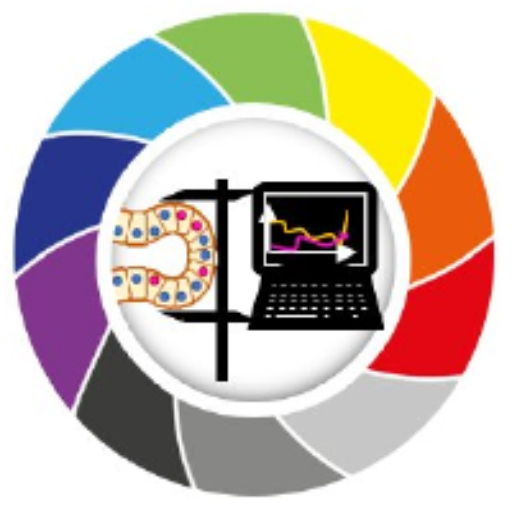Scanpy, Your Single Cell RNA-seq Data Analyst-Single-Cell RNA-seq Data Analysis
AI-powered insights for single-cell RNA-seq
How do I preprocess single cell RNA-seq data using Scanpy?
Explain the steps for clustering in scvi-tools.
What are the common pitfalls in single cell data analysis?
How to interpret differential expression results in Scanpy?
Related Tools
Load More
Bio-image Analysis GPT
Bio-image Analysis with Python, a GPT created with content from the BioImageAnalysisNotebooks by R. Haase, G. Witz, M. Fernandes, M.L. Zoccoler, S. Taylor, M. Lampert, T. Korten, licensed CC-BY 4.0 and BSD3 unless mentioned otherwise. https://haesleinhuep

Data Analyse
Data Science Expert analyzing user-uploaded data to provide accurate insights.

Python Data Analysis
I am an expert in Python Data Analysis, proficient in using advanced data analytics tools and techniques to extract meaningful insights from complex datasets.
生信分析专家
解决生信分析问题,生信编程等各种问题
Single Cell Explorer
A bioinformatician expert in single cell analysis, offering insights and guidance.

Seurat, Your Single Cell RNA-seq data Analyst
Expert in Seurat for single-cell RNA sequencing data analysis.
20.0 / 5 (200 votes)
Introduction to Scanpy, Your Single Cell RNA-seq Data Analyst
Scanpy is a Python-based toolkit designed for the analysis of single-cell RNA sequencing (scRNA-seq) data. The goal of Scanpy is to facilitate efficient, scalable, and in-depth analysis of single-cell data, ranging from small datasets to large-scale studies involving millions of cells. It is built on the principle of flexibility, allowing users to easily customize workflows depending on the nature of their research and the specific biological questions they are addressing. Scanpy integrates various methods for preprocessing, visualization, clustering, differential expression analysis, and trajectory inference. Its core structure revolves around an 'AnnData' object, which stores gene expression data along with metadata such as cell types, conditions, or time points. For example, consider a research lab studying immune cell diversity in response to infection. They might use Scanpy to preprocess raw single-cell data, cluster immune cell subtypes, and identify unique gene signatures of different cell populations. The scalability of Scanpy ensures that even if the study expands to hundreds of thousands of cells, the computational framework remains efficient and responsive.

Main Functions of Scanpy, Your Single Cell RNA-seq Data Analyst
Preprocessing
Example
Filtering cells and genes based on quality metrics such as mitochondrial gene content or cell read depth.
Scenario
A researcher cleans raw scRNA-seq data by removing low-quality cells with high mitochondrial gene expression, ensuring that downstream analyses are based on reliable data.
Dimensionality Reduction
Example
Performing PCA, t-SNE, or UMAP to project high-dimensional gene expression data into two or three dimensions for visualization.
Scenario
After preprocessing, the researcher applies UMAP to visualize the clustering of different immune cell types in low-dimensional space, revealing distinct populations based on gene expression patterns.
Clustering
Example
Detecting cell clusters using the Leiden or Louvain algorithm.
Scenario
The researcher uses clustering algorithms to identify novel immune cell subtypes in their dataset, which could have distinct roles in the immune response to infection.
Ideal Users of Scanpy, Your Single Cell RNA-seq Data Analyst
Bioinformatics Researchers
Bioinformatics specialists interested in developing custom analytical pipelines and exploring diverse single-cell data modalities would benefit from Scanpy. Its Python-centric design allows integration with other libraries like NumPy, Pandas, and scikit-learn, offering flexibility in handling complex data analysis workflows.
Experimental Biologists
Experimental biologists with a focus on cell biology, immunology, or developmental biology who aim to analyze single-cell datasets will find Scanpy useful for uncovering cellular heterogeneity and gene expression dynamics in their experiments. It provides accessible workflows for users with programming experience, making it a powerful tool for biologically oriented data exploration.

How to Use Scanpy, Your Single Cell RNA-seq Data Analyst
Visit aichatonline.org for a free trial
Go to aichatonline.org to start a free trial of Scanpy without the need to log in or subscribe to ChatGPT Plus. This will give you access to all the tools and features necessary for single-cell RNA sequencing analysis.
Prepare your single-cell RNA-seq data
Ensure that your data is in a compatible format, such as a count matrix (e.g., `.h5ad`, `.loom`, or `.csv`). Quality control steps like filtering cells and genes are recommended before starting your analysis with Scanpy.
Set up your Python environment
Install Scanpy and necessary dependencies in your Python environment. Use a virtual environment or Anaconda to manage packages. Common dependencies include `scanpy`, `anndata`, `numpy`, `pandas`, and `matplotlib`.
Load and preprocess your data
Use Scanpy's functions to load your dataset (`scanpy.read_h5ad`, `scanpy.read_loom`, etc.), normalize the data, and perform basic preprocessing like logarithmizing the data, detecting highly variable genes, and scaling the data.
Analyze and visualize your data
Perform downstream analyses such as PCA, clustering, differential expression, and UMAP visualization. Use Scanpy's plotting functions (`scanpy.pl`) to visualize gene expression, clusters, and other features. Save your results for further interpretation.
Try other advanced and practical GPTs
Kontrola pravopisu
AI-Powered Czech Grammar Check

STEM.AI
AI-Powered Solutions for STEM Challenges

Freelance Proposal Assistant
AI-powered Proposals for Freelancers

Flutter riverpod
Enhance your Flutter apps with AI.

Serge TSH
AI-Powered Insights and Solutions.

Inbound Marketing Plan Builder
AI-Powered Inbound Marketing Strategies

Visio Wizard
AI-powered automation and error resolution for Visio and VBA.

Python & Gurobi Master
Optimize with AI-driven solutions.

Ricercatore Analitico
AI-Powered Deep Dive Analysis

ProMail Coach 1.0
Enhance Emails with AI Precision

Explorador Técnico
AI-powered document insights, simplified.

Empath
AI-driven insights from your writing

- Visualization
- Data Preprocessing
- Clustering
- Differential Analysis
- Dataset Integration
Detailed Q&A about Scanpy, Your Single Cell RNA-seq Data Analyst
What kind of data does Scanpy support?
Scanpy supports various types of single-cell RNA-seq data formats, including `.h5ad`, `.loom`, and `.csv` files. It is optimized for handling large-scale datasets efficiently, making it suitable for both small and extensive projects.
Can I perform differential expression analysis with Scanpy?
Yes, Scanpy allows you to perform differential expression analysis between clusters or conditions. You can use functions like `scanpy.tl.rank_genes_groups` to identify marker genes and compare expression levels across cell types or states.
Is it possible to integrate multiple datasets in Scanpy?
Absolutely! Scanpy provides tools for batch correction and integration of multiple datasets, including methods like Harmony, BBKNN, and others. This is useful for combining data from different experiments or conditions.
What visualization options does Scanpy offer?
Scanpy offers a wide range of visualization tools, including UMAP, t-SNE, PCA plots, dot plots, violin plots, and heatmaps. These visualizations help in understanding data structure, gene expression patterns, and cell clustering results.
How does Scanpy handle large datasets?
Scanpy is designed to efficiently manage large-scale datasets through optimized data structures and memory management. It leverages sparse matrices and chunking strategies to process millions of cells without overwhelming system resources.